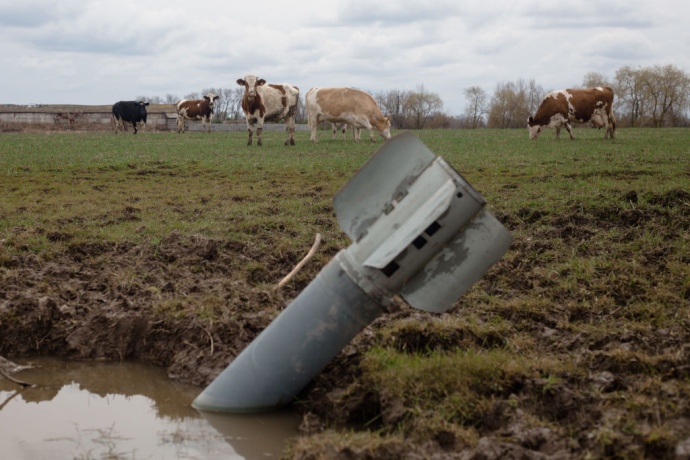

Photo: Anastasia Vlasova / Getty Images
Rubryka informs about this.
What is the problem?
According to a new assessment by the Initiative for Accounting for Greenhouse Gas Emissions from War, the first year of the Russian invasion of Ukraine saw the release of 120 million tons of carbon. In the subsequent two years of the war, emissions continued to rise, reaching a total of 175 million tons. This surpasses the yearly carbon emissions of a highly industrialized nation like the Netherlands, equivalent to 90 million petrol cars on the road or the construction of 260 coal-fired power plants with a capacity of 200 MW each.
"While the world is trying to reduce carbon emissions to avoid a climate crisis, Russian aggression leads to significant additional emissions. More than a third of these emissions occur outside the borders of Ukraine, confirming that the impact of Russia's war on the environment knows no borders," Lennard de Klerk, the report's lead author, says.
According to experts, the impact of war on the climate increases every month due to fighting, fires, destruction of infrastructure, and other direct and indirect effects.
Large-scale attacks on the Ukrainian electricity grid have led to many uncontrolled leaks of SF6 (sulfur hexafluoride), a greenhouse gas more powerful than carbon dioxide, methane, and nitrous oxide.
"Military operations account for almost a third of estimated climate damage, as military operations require vast amounts of equipment, munitions, and explosives, the production of which is very carbon-intensive, as well as large volumes of fuel, leading to indirect and direct greenhouse gas emissions. In addition, the impact of military supply chains on the climate has not been sufficiently studied, and the actual damage to the climate may be even greater," the report's co-author, Mykola Shlapak, comments.
What is the solution?
Russia should be responsible for these emissions and their damage to the climate. Ukraine and international allies are forming an International Compensation Mechanism to finance the recovery.
The most obvious way to do this is to direct funds to restore destroyed forests and other nature-oriented solutions that absorb atmospheric emissions.
In addition, it is essential to consider emissions and implement more ecological and climate-friendly practices that will allow for their reduction in reconstruction planning. Projects for restoring Ukrainian cities must be implemented according to high energy-efficient standards.
How does it work?
This can be achieved through smart design that uses less material, recycling cement and steel from demolished buildings, and using low-carbon cement and steel or alternative building materials.
Additionally, to achieve a truly sustainable green reconstruction, Ukraine must focus on developing a circular economy, domestically manufacturing materials, and involving local individuals, including those temporarily displaced.
Внаслідок авіаударів російської армії по Куп'янську та Куп'янську-Вузловому ввечері 26 квітня загинув 88-річний чоловік, двоє… Читати більше
Seventeen-year-old Sophie Kim from California is turning compassion into action. The high school student designed… Читати більше
У канадському місті Ванкувер кілька людей загинули та постраждали після того, як автомобіль в'їхав у… Читати більше
У селищі Мізоч, що на Рівненщині, вкрали квіти зі стели загиблих захисників України. Пізніше з’ясувалося,… Читати більше
Вночі російська армія атакувала Україну 149 безпілотниками. Сили протиповітряної оборони збили 57 з них, ще… Читати більше
Протягом минулої доби, 26 квітня, на фронті відбулося 174 бойові зіткнення. Зокрема, на Покровському напрямку… Читати більше
Цей сайт використовує Cookies.